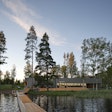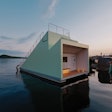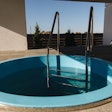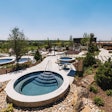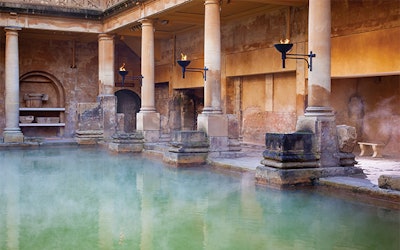
You don't have to look very far to see we're inundated with information about the health benefits of soaking/bathing in hot water. Some might even go so far as to say we're currently in a Golden Era of hydrotherapy research.
What makes much of this fluid discourse feel so new is that it runs counter to the hedonism, party lifestyle and brazen sexuality that defined the "hot tub" experience of the '70s and '80s, the period when modern portable spas and hot tubs became modern fixtures. Nowadays, the focus has mostly shifted to the far more wholesome narrative that soaking in a spa is "as good as exercise."
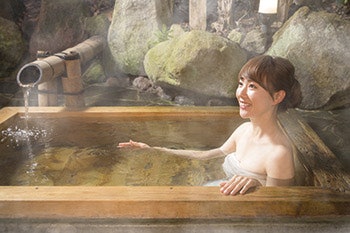 Japanese hot spring bath
Japanese hot spring bath
Despite the focus on recent studies and new medical research, however, the modern Hot Tub Health Movement is nothing new. In fact, the belief in the physiological benefits of hot water immersion reaches back thousands of years — even before the idea that "germs" cause illness.
Those of us today who are promoting the benefits of soaking in hot tubs and the aquatic lifestyle in general are in reality simply echoing what people have known and practiced throughout recorded history, even as far back as the Neolithic Age. Whether intuitively or intellectually, we seem to understand that bathing is good for our minds, bodies and spirits — and we always have.
RELATED: Health and Hot Water: The History of Nature's 'Hot Tub'
Although it's hard to say exactly when bathing rituals began, archaeologists generally point to the Great Bath of Mohenjo-daro as one of the earliest known public baths. It dates back 5,000 years to the Indus Valley Civilization, one of the three oldest societies in Mesopotamia, now modern Pakistan.
 Turkish bath
Turkish bath
And of course, the citizens of antiquity were almost obsessed with bathing rituals. Roman thermae, or public bathhouses, were spread throughout the empire, as many of their ruins still attest. At times they were strictly the province of the ruling class, while at others, thermae were common among all levels of society. The city of Bath, known as Aquae Sulis during ancient Roman times, located in what is now England, stands as one of the prime examples of Roman bathing culture. Built around a system of natural hot springs, the city was home to an array of often-innovative public baths supplied by both the hydrothermal springs and surprisingly advanced water delivery systems.
Such facilities encompassed a number of innovations that would influence many inventions that are key to our own modern lives. The famous Roman aqueducts, for example, were built at least in part with the idea of bringing freshwater to the bathhouses. Wood-burning furnaces in the thermae, known as hypocausts were used to circulate both hot water and heated air throughout the facilities. The bathhouses were designed to provide rooms with different temperatures from hot to cold based on their proximity to building's hypocaust. They had complex plumbing and ventilation systems and some even used silver plates to "purify" water, just as we do today using silver ions.
In many respects, Roman baths were the social centers of cities and towns. Both men and women of all ages routinely spent hours each day in them not only bathing but also exercising, reading, enjoying theatrical performances, listening to music, dining, debating and conducting business. In the eastern reaches of the empire, Turkish baths, which were the first to feature steam, became similarly widespread hubs of social activity.
On the other side of the planet, the logic of healthy hot water emerged in an equally organic manner, as Asia developed its own bathing traditions.
Bathing rituals date back to Indian Buddhist temples, where priests bathed as part of purification ceremonies. The practice also spread to China, where the Chinese version of the Roman bathhouse known as yuya, which means "hot water shop" spread beyond religious leadership to the general population who viewed bathing as form of medicinal healing.
Elsewhere in Asia, Japan developed its famous bathing traditions, which were largely based on a cultural obsession with cleanliness, both hygienic and spiritual. Today, Japanese ofuro and sento tubs remain popular and influenced the wooden barrel hot tub trend of the '70s.
So while we at AQUA get excited by every new study that confirms the body's healthful and hearty reaction to immersion in hot water and aquatic massage, and feel that this new research will eventually lead to a breakthrough for hot tubs as a health product, the point should be made to those hearing it for the first time that these medical conclusions are as old as the ruins of Pompeii.

































